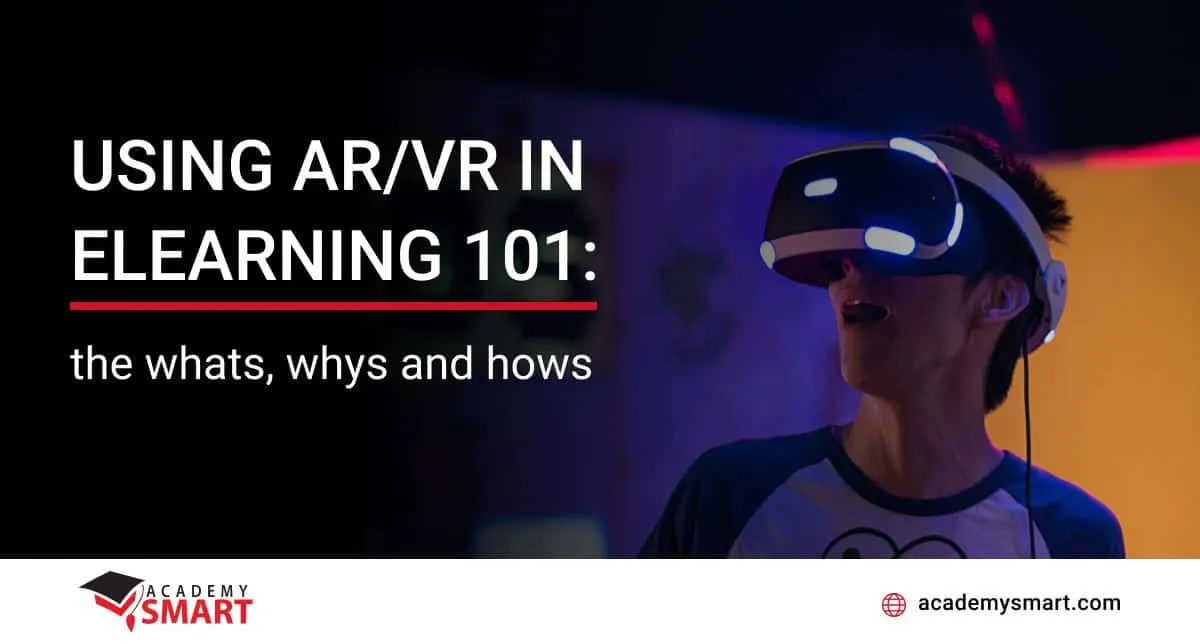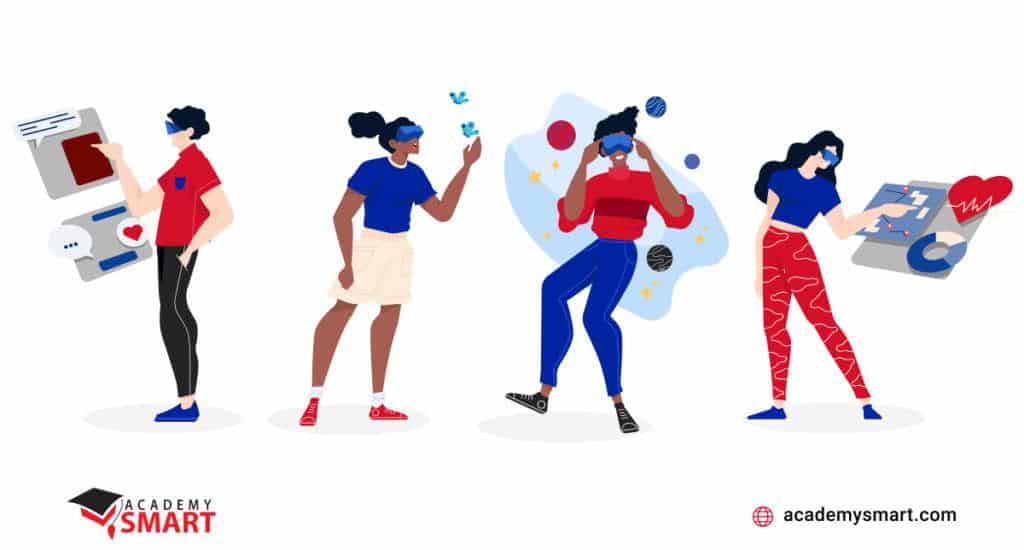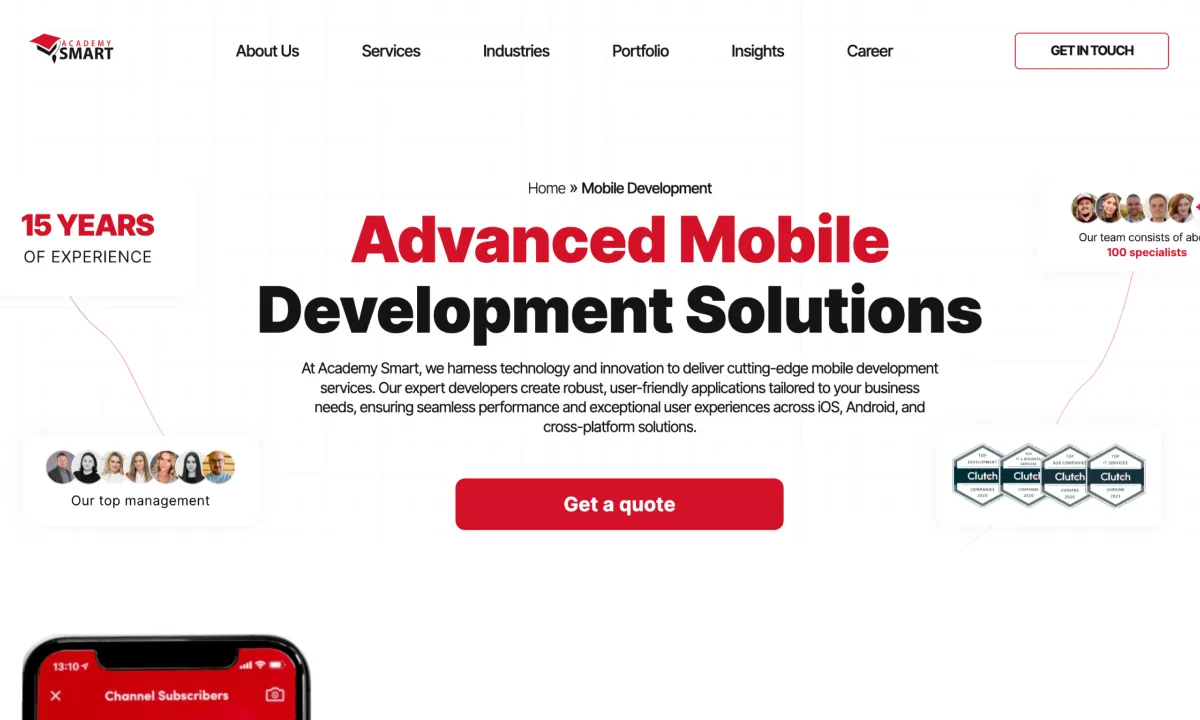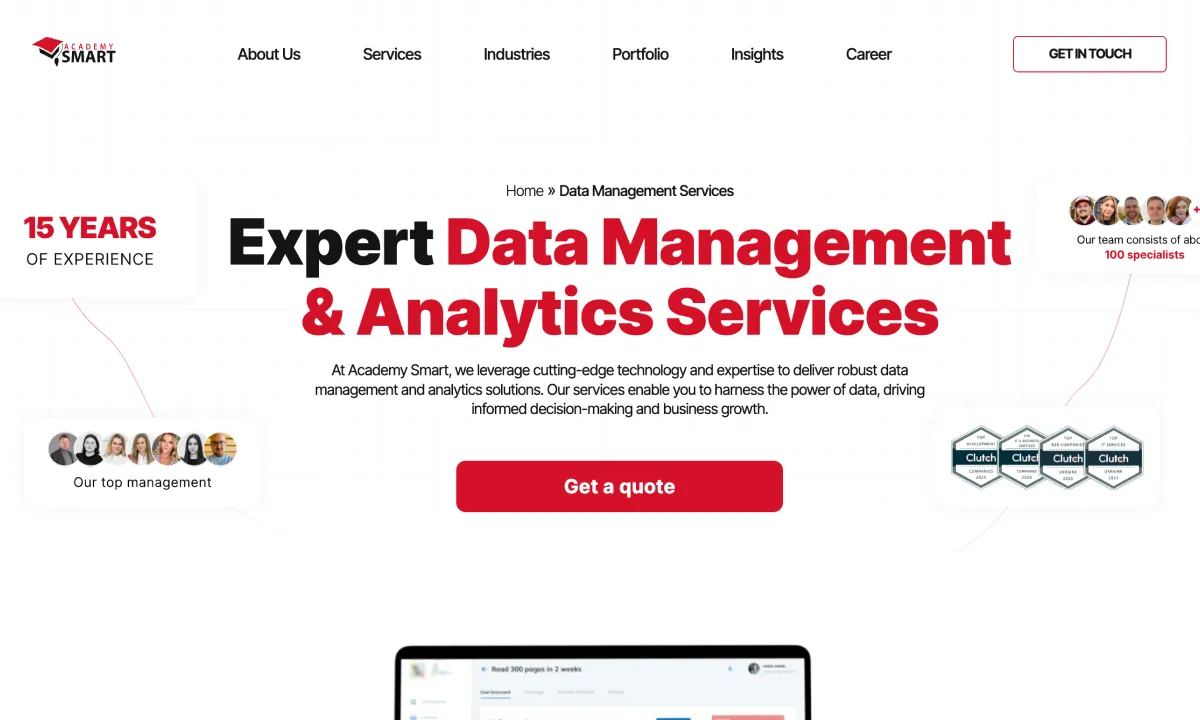
Using AR/VR in eLearning 101: the whats, whys and hows
Contents
According to the research findings from Goldman Sachs, the AR/VR technologies market will grow to nearly $95 billion by 2025. The pandemic highlighted the need to help students conduct various experiments without having physical access to the labs, and AR/VR solutions might provide an answer to this challenge.
Schools and universities, as well as corporate training facilities, were implementing augmented reality training solutions long before the COVID-19 struck. But now this is not a whim — using AR and VR in eLearning is a must to ensure cognitive and efficient learning in the post-COVID era. This article explores the AR/VR technologies impact on eLearning, so if you are considering adding AR/VR online courses to your MOOC platform or empowering your curriculum with virtual reality training — you might find the answers you seek here.
AR vs VR: What’s the Difference?

Despite quite often being used in tandem, the terms AR and VR are not interchangeable. Augmented reality (AR) and Virtual Reality (VR) are based on different technologies, have different use cases and serve different market objectives.
In short, VR uses opaque headsets to block off the surrounding world and create immersive virtual reality experiences, while AR overlays digital elements over the live view to create augmented experiences while allowing the users to see the real world around them.
Practical Ways of Using AR and VR in eLearning
1. Enhanced Online Training Simulations
High-risk industries like oil and gas, construction, emergency rescuers, paramedics, firefighters and others, where the cost of mistakes is very high, have been among the first to start using VR simulations for training purposes. Such virtual training helps develop spatial intelligence, train the learner’s balance and even help to deal with the fear of heights.
By recreating the actual workplaces and workings of intricate machinery in virtual classrooms, businesses can save on expenses (there is no need to dedicate a costly piece of equipment to a training facility and disassemble it; the operators can learn the workings of the machine in a virtual simulation), as well as ensure the security of the operators. A wrong decision will lead to a virtual failure which will do no actual harm but will provide the learners with invaluable hands-on experience in their respective fields.
Safety training using AR/VR online courses can become much more effective and engaging, while also being much less dangerous and costly. Being a part of an LMS also means the ability to undergo compliance checks and monitor the completion results.
2. Digital classrooms, labs, and field trips
A 360-degree camera helps create immersive VR recordings. Many teachers use this already to create learning materials, so if a learner misses a lab, a lecture or a field trip — they can view the recordings instead to learn the material. This also helps with visual feedback.
Should your learners fail to grasp any important step — they can use the VR simulations to practice it as many times as they need to successfully pass the assessment and gain the skills required.
AR/VR can imbue the training process with gamification elements, while keeping it controllable, safe and easy to monitor. This provides improved learning outcomes and reduces the time and expenses on consumables, commuting, etc.

The Challenges and Restrictions for Developing eLearning Projects with VR/AR technology
If you plan to create a user-friendly LMS with AR and/or VR features, you must be aware of certain challenges you will face:
1. The cost of development
The cost of building AR eLearning courses (or VR eLearning courses for that matter) is higher, and they take longer to produce as compared to conventional interactive online courses. Keep in mind that the AR/VR content has to perform consistently across a variety of devices, which entails longer development cycles with in-depth testing.
2. High cost for the end-users
While global corporations have the budgets to purchase lots of head-mounted VR gear, educational institutions rarely can afford equipping whole classes with it. Mobile-based AR solutions are much more affordable, but full immersion is not possible.
In addition, the content you are going to build will cost some money — and many educational bodies will struggle to purchase it. Thus, you should check if there is a demand on the market before investing in building AR/VR online courses.
3. Inconvenience
Both AR and VR gear available nowadays limits the user’s mobility. While AR goggles can be quite lightweight (barely more than frames for mobile phones), VR headsets are usually connected to stationary PCs or laptops with long cords, severely limiting the learner’s mobility. This makes using them inconvenient to say the least — but the equipment manufacturers are making progress, and we will definitely see wireless VR headsets (like Oculus Quest) in the future.
4. Health-related restrictions for VR
Extended use of VR technology can lead to headaches, nausea, vertigo, increased eye strain, and the weight of the headgear can strain the learner’s neck and back muscles quite severely. This results in restriction in the time a student can spend on the AR/VR simulation.
Besides, kids under 13 are expressly prohibited from using VR devices (aside from stationary VR headgear used for children vaccination). Thus, a huge K-12 educational market remains excluded from your target audience.
5. Software and privacy issues
AR and VR are really just at their infancy, meaning there are still many interoperability issues to be ironed out to ensure seamless integration with various systems. Besides, data security remains a concern, as users’ data should always be protected.
6. Effectiveness evaluation
While using innovative technologies like AI and ML, AR and VR to deliver training definitely seems cool, there might be scenarios where the AR/VR technologies impact on the training outcomes is not so evident. Perform continuous evaluation of the learning results to adequately assess the role of virtual reality training and adjust the courses to ensure they pay off.

Summary
AR and VR technologies can be one of the most functional features of your LMS project. They ensure deep immersion, the safety of training, cost reduction, and easy assessment of topics. On the other hand, the cost of producing the AR/VR content can be quite high, as well as the costs of ensuring the learners can actually consume it.
Nevertheless, AR and VR implementation in eLearning can definitely be profitable and useful. Educational institutions, investors and startups that can come up with feasible application ideas will reap the benefits of this promising technology.
Should you have such an idea already — AcademySmart can help implement it. We have 10+ years of expertise in developing eLearning solutions and will be glad to assist you in making your LMS project a reality. Contact us to discuss any questions or concerns and get a quote of the project!
Book a free consultation

Reach out to start talking today!











